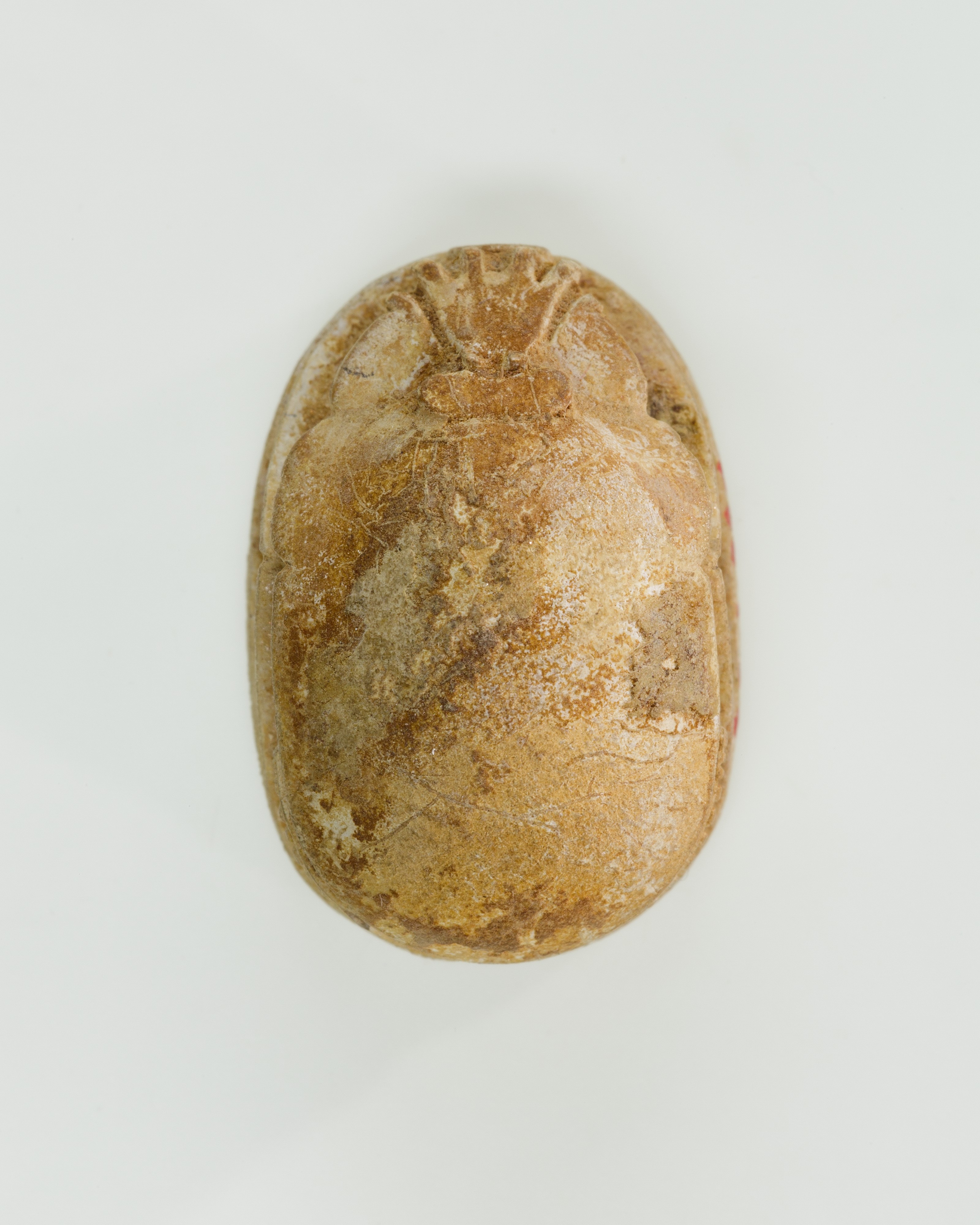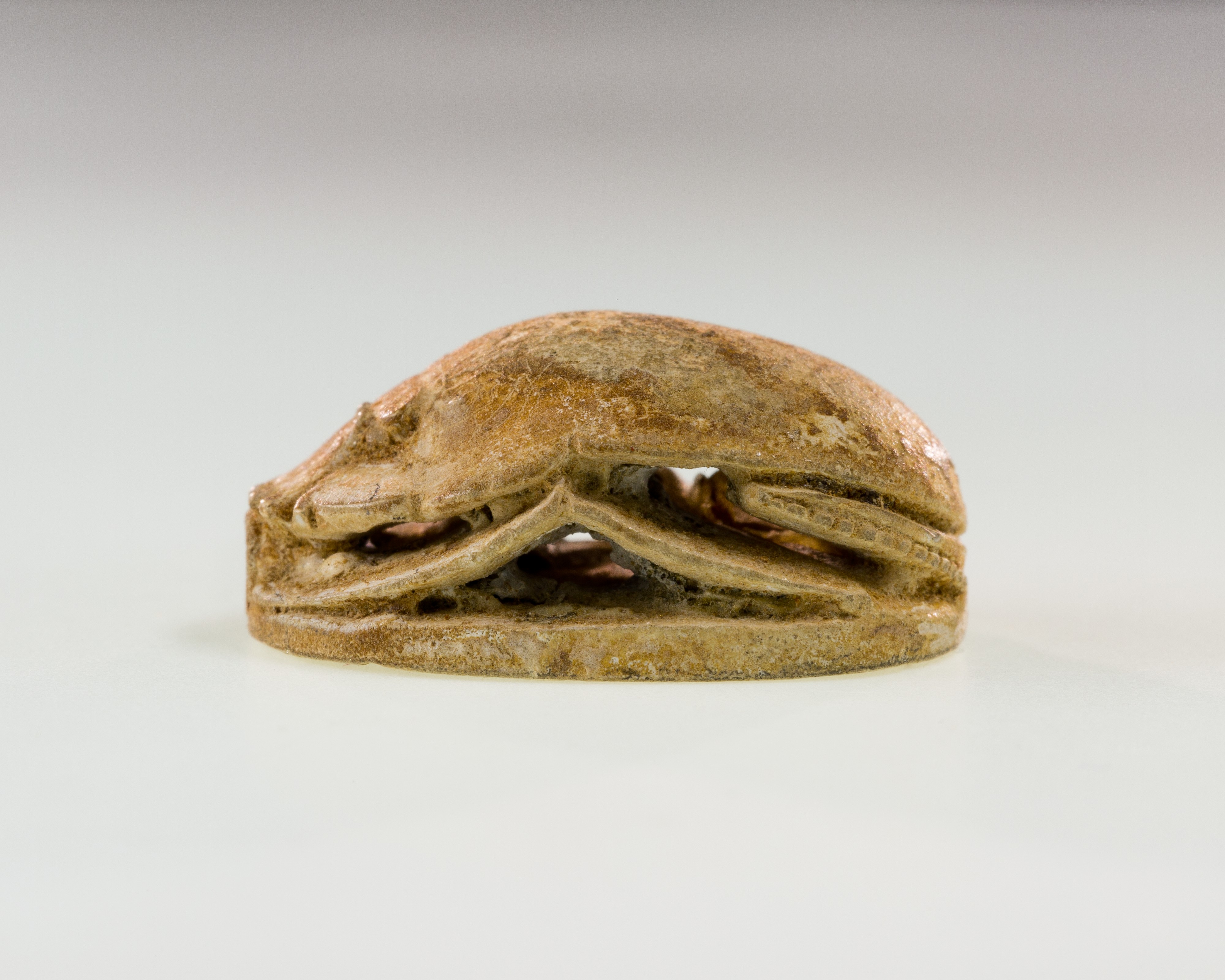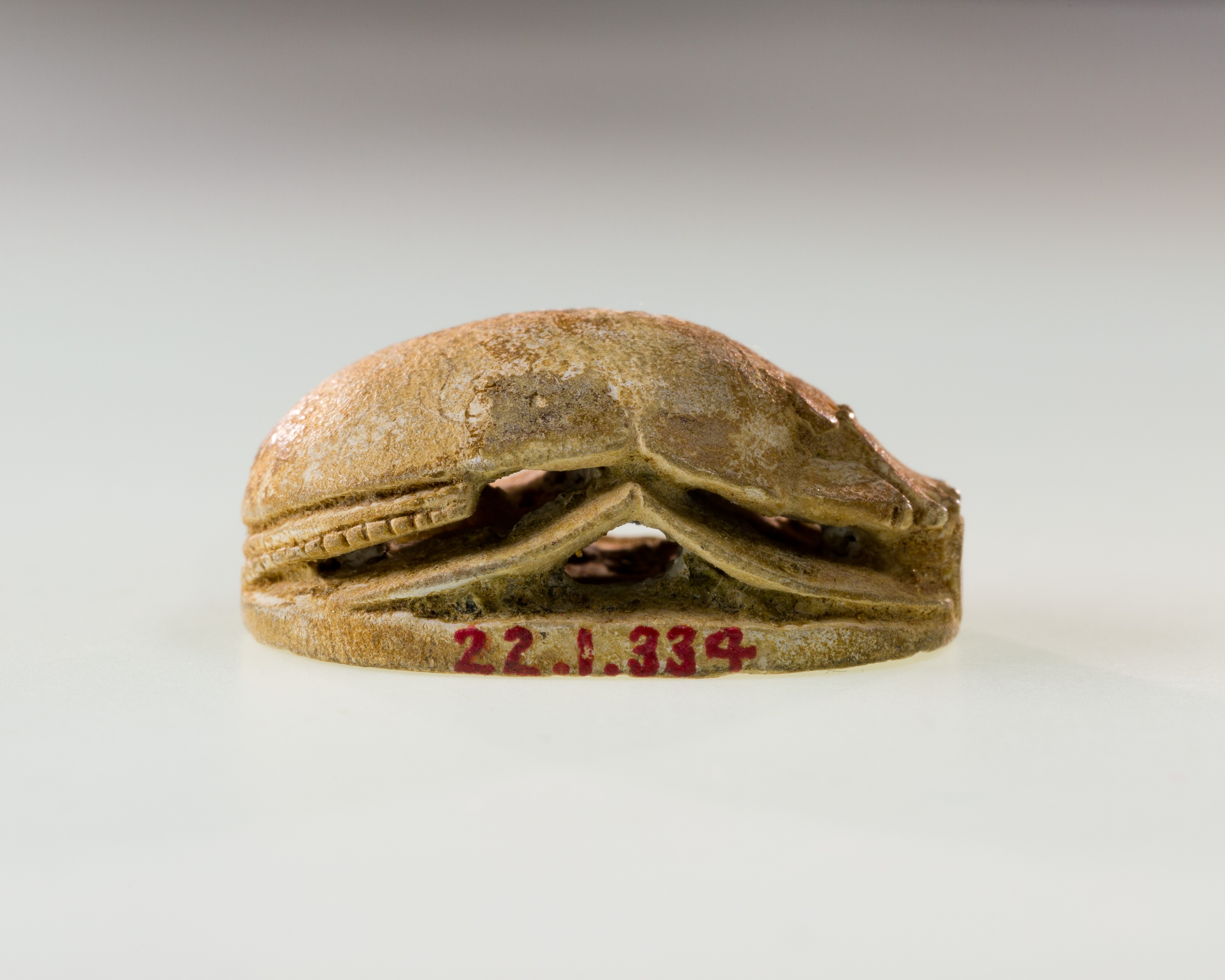Scarab Decorated with Symbol of Unification
Middle Kingdom
A popular motif on Middle Kingdom scarabs is the sema-tawy, the symbol of the unification of Egypt. The motif consists of a windpipe entwined with lotus and papyrus plants, floral symbols that respectively represent Upper and Lower Egypt. While many early Middle Kingdom scarabs (late Dynasty 11–early Dynasty 12, ca. 2030-1850 B.C.) show the sema-tawy alone, the compositions of the late Middle Kingdom (late Dynasty 12–mid Dynasty 13) often display two sema-tawy motifs in symmetric opposition or combine it with other motifs such as spirals or hieroglyphs. The motif does not disappear after the Middle Kingdom but continues to appear on Egyptian and Canaanite scarabs during the Second Intermediate Period (Dynasty 14–17, ca. 1640–1550 B.C.) when, ironically enough, the kingdom was no longer unified. The accompanying motifs or the details in the shape of the scarab allow dating these scarabs more precisely.
Due to rights restrictions, this image cannot be enlarged, viewed at full screen, or downloaded.
This artwork is meant to be viewed from right to left. Scroll left to view more.





